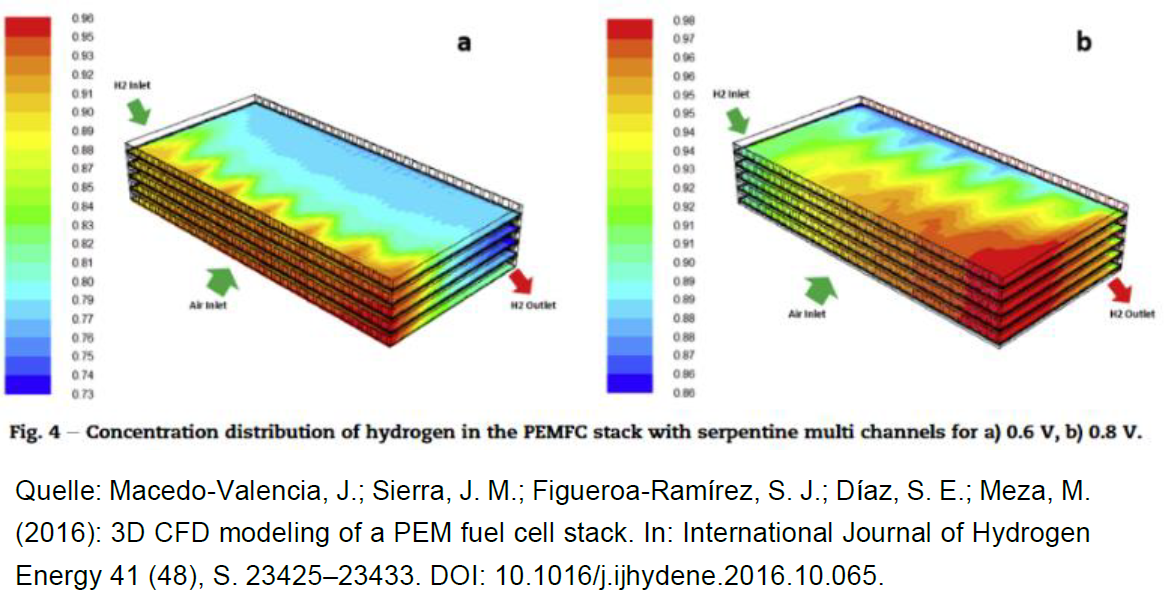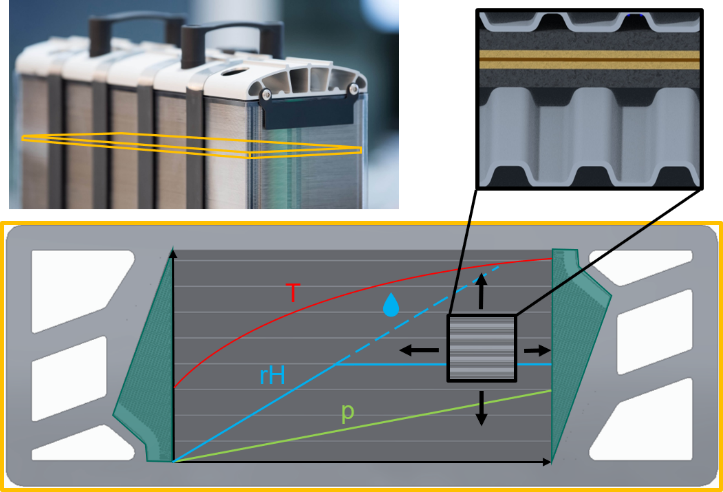Development of a spatially resolved model for the analysis of gradients in the PEM fuel cell
- Subject:Spatially resolved fuel cell model
- Type:Master Thesis
- Tutor:
- Zusatzfeld:
Completed
Masterarbeit
Development of a Matlab tool for the analysis of gradients within the fuel cell and mapping of the spatially resolved sub-areas within the test bench environment.
Within the PEM fuel cell, bipolar plates provide the reaction gases and the removal of the heat and water produced. In addition, the electric current generated during the reaction is dissipated via this core component. Different gradients form within the active reaction surface depending on the bipolar plate and channel geometry. These include gas concentration distributions as well as different gradients of humidity, pressure and temperature of the fluids present. The determination of the gradients enables an optimisation of the operating conditions with regard to a current density distribution that is as homogeneous as possible in order to increase the power density and service life of the fuel cell.
Task:
Within the scope of this Master's thesis, a concept for recording the gradients (temperature, pressure, humidity and gas concentration distribution) within the active reaction surface of a bipolar plate is to be developed. The tool should also make it possible to analyse spatially resolved sub-areas of the bipolar plate in order to determine optimal operating conditions with regard to power density and service life. In this context, the dynamic operational management within the fuel cell system will also be investigated. These findings can in turn be used for the specific setting of measurements in a test bench environment.


